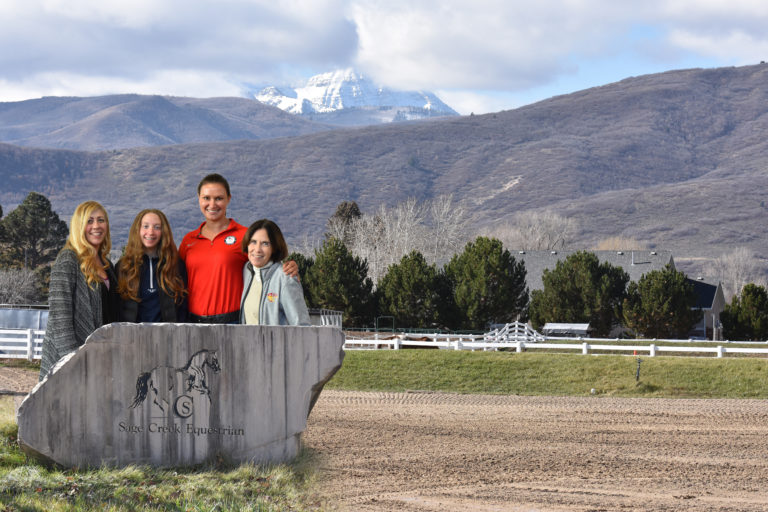Connection, as defined by the 2011 USDF Glossary of Judging Terms, is the “state in which there is no blockage, break or slack in the circuit that joins horse and rider into a single, harmonious, elastic unit.“
Nowhere in this definition does it address how much weight the rider should expect to feel in the reins. This is a question I get all the time. The answer is not so simple. It is my belief that all horses are individuals, just as no two people are the same. The connection a horse takes in the bridle is as unique as he is. Some horses are more comfortable taking a more firm feel, while others are secure in a lighter feel. All riders also have a different idea of what is light and what is heavy. My idea of a heavy horse might just be someone else’s light and vice versa. Connection to the bit is not cookie cutter. To expect every horse to take the same weight in the reins is unrealistic.
What I try to get my students to focus on is that it is not always the amount you feel in your hands but what you can, or cannot, do with what you feel in your hands. With some horses, their happy place is a little more or less in the rider’s hand than average.
But how do you tell the difference between a correctly connected horse and a heavy or sucking-back horse? That is the million-dollar question.
To answer this question, you need to look at the whole picture. First, examine the balance of the horse relative to his level of training. A single horse during the course of his training and consequent changing balance will change the connection with the rider’s hand. As he progresses through the levels, thus achieving a more uphill balance, his connection in the bridle should become more soft and rideable. The horse must be in a level (Introductory through First Level) to uphill (Second Level and above) balance to be properly connected. If you question your horse’s connection with the bridle, and the balance is not at least level, this could be where your problem is originating. Sometimes, horses that are on their forehand can be either too heavy from leaning on the bit for support or too light from ducking behind the contact and curling. The horse must be properly engaging his hindquarters to achieve the correct balance.
The horse should be ridden with proper energy and activity to be correctly connected. We have all seen horses either crawling around the ring, lacking the necessary impulsion, or rushing around the ring due to a rider’s misguided notion of riding her horse forward. Both can create issues in the bridle.
I am a huge proponent of riding forward, but there are downsides to too much forward. By rushing a horse off his feet, you are running him off his hind legs and onto his forehand, thus creating the downhill balance previously mentioned with the possible too-heavy or too-light side effects. More often than not though, horses just rushing will have a tendency to lean on the hand. Not going with enough energy can cause the same downhill tendencies. Finding the right mix of enough energy tempered by a correctly balancing half halt is not so easily done.
Knowing whether your horse is too heavy or light also boils down to the degree of suppleness. Can you move the horse laterally and longitudinally with ease? If the feel in the hand is a little too heavy or light for your taste, but you can bend and supple your horse without difficulty, my guess is the connection is OK. If you find that when you go to make a half halt or ask for more bend you are met with resistance and a braced, stuck feeling in the bridle, then the connection is not where it should be. This is also true for those horses that live on the lighter side of connection. If asking for a half halt or greater degree of bend disrupts the horse, then maybe the throughness of the connection is not quite there yet. It is all about pliability. Is the horse pliable? Can you apply your aids and get the proper response?
A horse’s connection is a perpetual work in progress. Remember, dressage is a partnership between two living, independent beings, each with particular and individual tastes. The connection to the bit is one of those places where there needs to be a compromise of sorts. The horse brings to the table a set of preferences that can be improved upon but never totally changed, as does the rider. Some horses prefer a more substantial feel and that is OK, provided the balance, engagement, impulsion and suppleness are all correct. The same is true for super light horses. Hopefully each horse that likes to take a substantial feel has a rider who prefers that, and every horse that is light as a feather has a rider equally so.

Jennifer R. Roth is a USDF bronze, silver and gold medalist, an “L” Education Program graduate with distinction and an FEI competitor and instructor. She was a participant in the first Dressage Foundation/USDF Young Rider European Education/Training Program (now named the Young Rider International Dream Program).











